1st DBAR Meeting Held in Beijing
The 1st Digital Belt and Road (DBAR) Meeting was held in Beijing on December 6-7, 2016. Nearly 100 experts and scholars from China, the Netherlands, India, Pakistan, Laos, Tunisia, Morocco and other countries and international organizations attended the meeting. Their goal was to discuss and formulate a DBAR Science Plan, establish a DBAR Science Committee and working groups, consider the strength of DBAR in 2017, and explore better scientific approaches to serve sustainable development along the Silk Road Economic Belt and the 21st-Century Maritime Silk Road (abbreviated as the "Belt and Road").
GUO Huadong, Chair of DBAR's Science Committee, delivered welcoming remarks and gave a comprehensive introduction to DBAR. He pointed out that DBAR's impact on sustainable development of the countries and regions along the Belt and Road is increasingly significant, and that DBAR welcomes scientists, technologists, and managers who show enthusiasm for tackling human sustainable development to contribute knowledge, experience, methods, technologies and applications related to DBAR's mission. Announced in this meeting were the establishment of the DBAR Science Committee, seven working groups, the DBAR Secretariat, and publication of the DBAR Science Plan (V1.0).
DBAR was initiated in May 2016 during the International Symposium on Earth Observation for One Belt and One Road (EOBAR). This large-scale international science program uses space-based observation to scientifically understand the Belt and Road, and is designed to provide scientific, open, and cooperative information to support decision-making for sustainable development along the Belt and Road. Guo said that the Belt and Road is a breakthrough and a global initiative, with a wide range, long cycle, and diverse fields, and is a long-term, complex, and arduous systematically engineered program. Earth observation technologies have the ability to macroscopically, quickly, and accurately detect changes on the surface of Earth. They can be used as a whole system to carry out large- and multi-scale, long-term, seamless, and continuous time cognition, and to provide scientific support for decisions relating to the sustainable construction of the Belt and Road and its member countries. He stressed that DBAR is a scientific, open, cooperative Earth observation program, and will benefit countries along the Belt and Road.

GUO Huadong gives the welcoming remarks.
CAO Jinghua, Director of the Bureau of International Cooperation of the Chinese Academy of Sciences (CAS), also gave remarks. He pointed out that countries along the Belt and Road have huge differences in terms of natural environment, social policy, and economic and cultural aspects. Only through scientific and technological innovation and international scientific and technological cooperation can we better cope with the complex challenges of development in this region. CAS has been working hard to promote scientific and technological cooperation and innovation along the Belt and Road. CAS is especially interested in exploring the fundamental, strategic and leading role of science and technology in the construction of the Belt and Road and is organizing the First International Science Forum of National Scientific Organizations on the Belt and Road Initiative. They hope that the implementation of DBAR can provide scientific information about development and decision-making support for the countries along the Belt and Road, and promote cooperation and sustainable development among those countries.
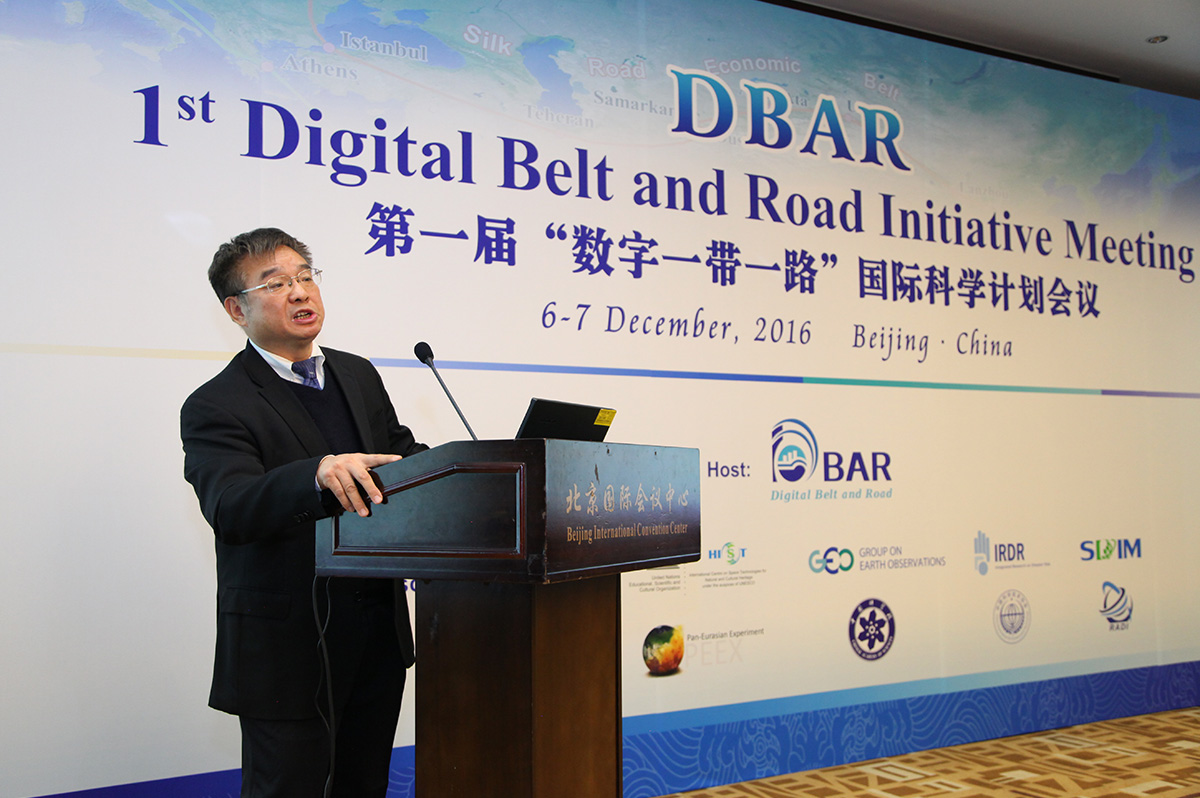
CAO Jinghua, Director of the CAS Bureau of International Cooperation, gives remarks.
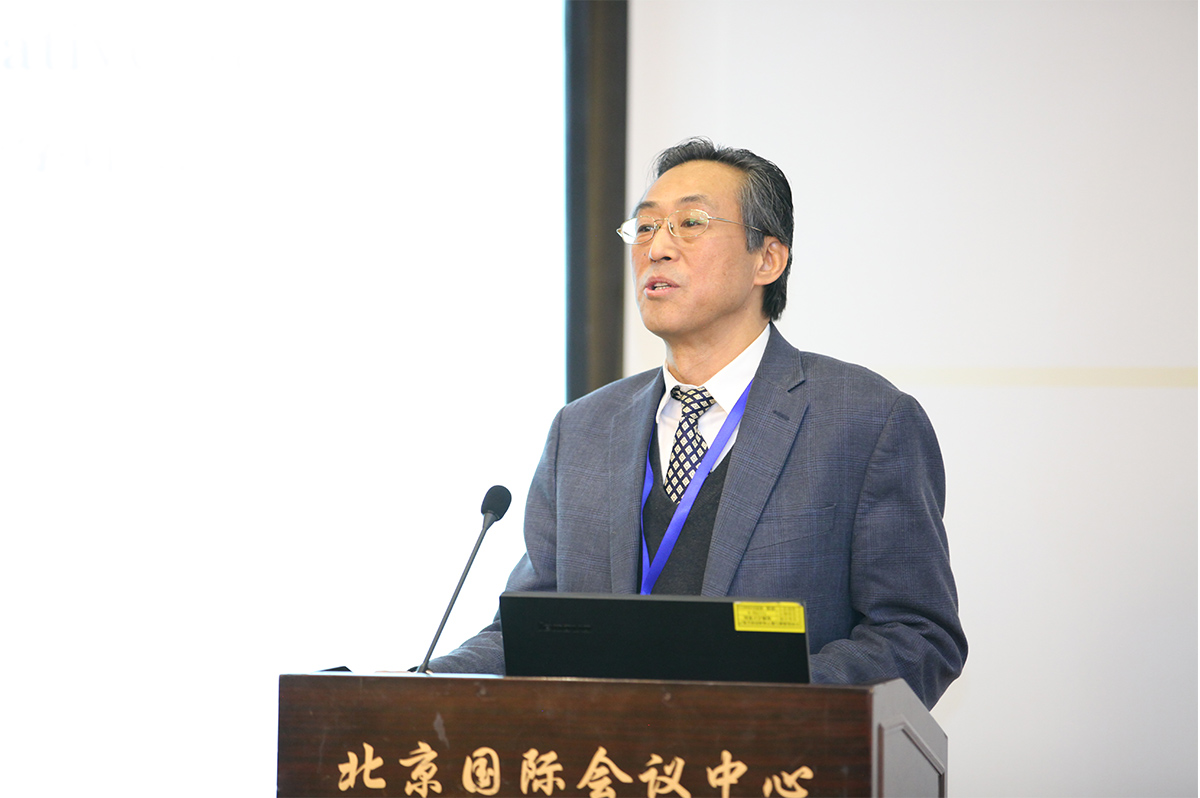
ZHANG Jiansheng, Director of the CAST Department of International Affairs, gives remarks.
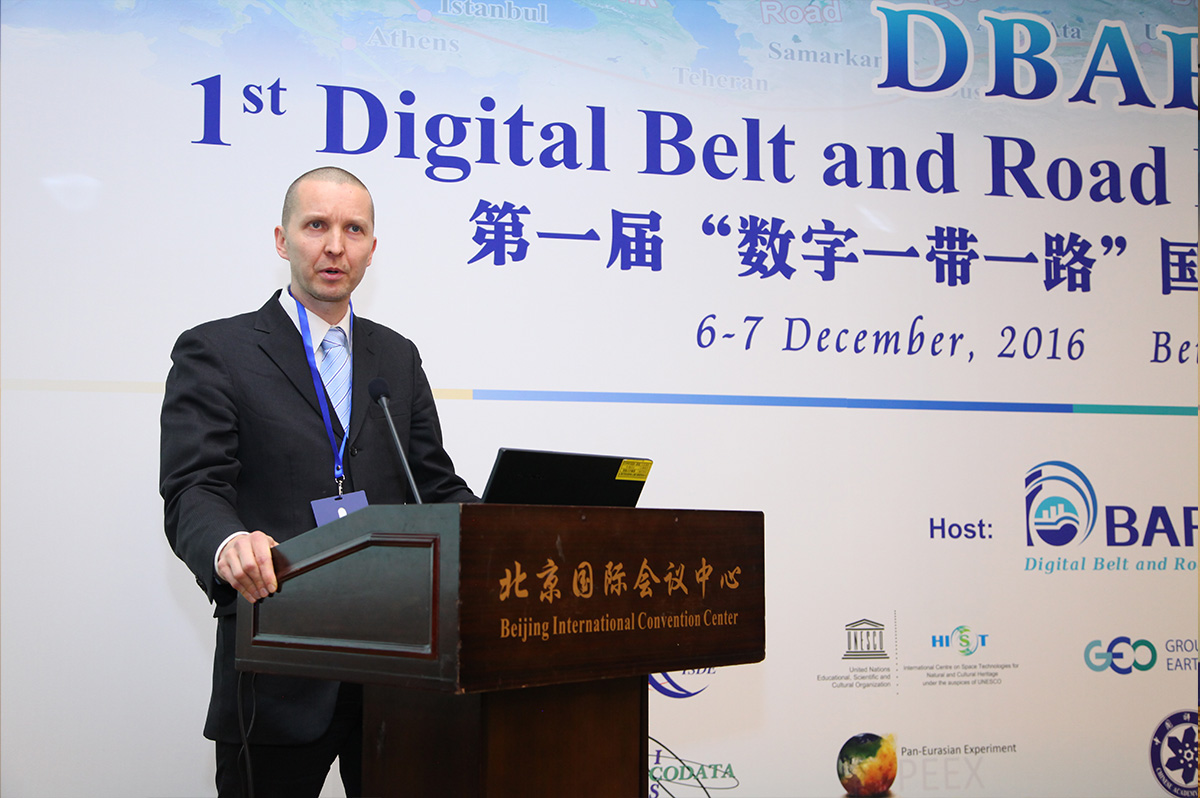
Dr. Joni Kujansuu of PEEX gives remarks.
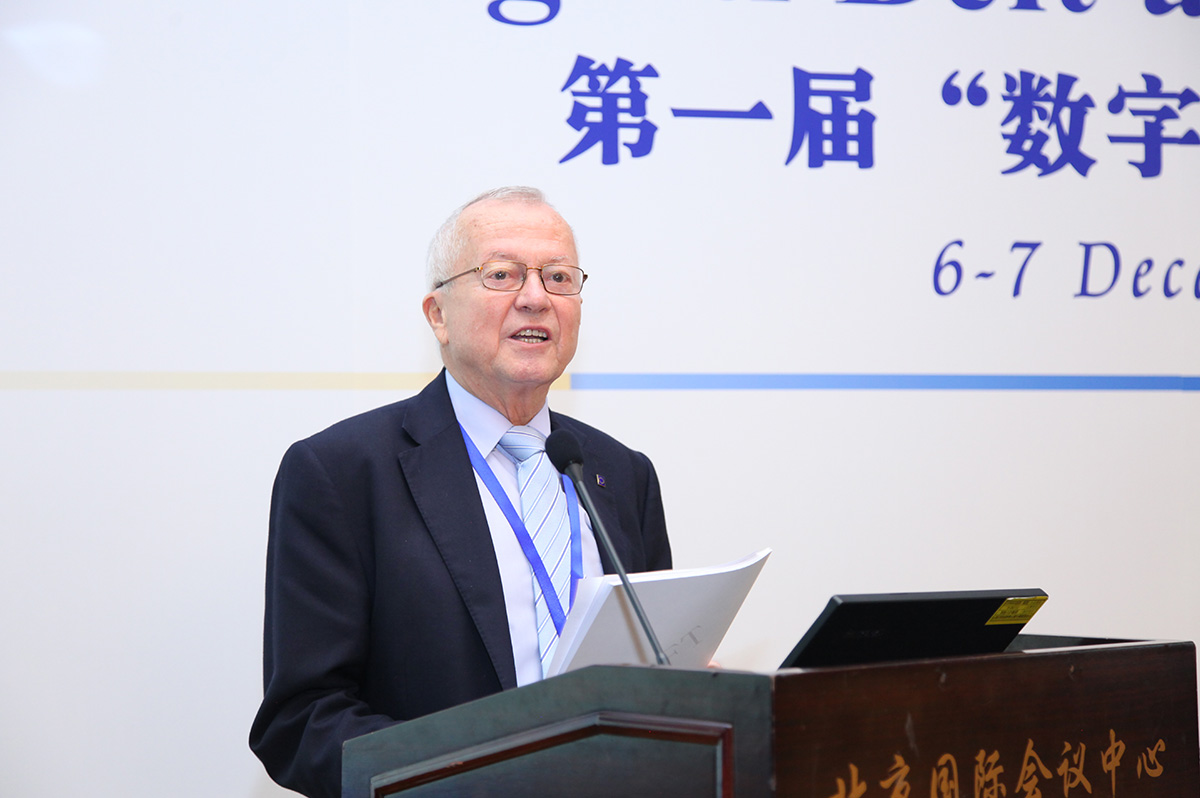
Prof. John van Genderen of the DBAR Science Committee gives remarks.

The first group members of the Science Committee are awarded letters of appointment.
The Science Plan clearly defines DBAR's vision, goals, and implementation plans. The vision for DBAR is to use Big Earth Data to promote scientific cooperation along the Belt and Road in the areas of geoscience, data, technology, and applications, and to serve the UN's 2030 sustainable development goals. DBAR is committed to three main goals: 1) to address scientific issues subject to the understanding of the Earth system in the process of sustainable development along the Belt and Road; 2) to use big Earth data to provide effective science and decision-making services; and 3) to establish a systematic network of cooperation and increase the capability for construction and technology transformation among users and stakeholders of the Belt and Road. DBAR is a ten-year program of three phases. The first phase (2016-2019) will create a Big Earth Data platform and build the Digital Belt and Road Science Alliance, form an international research network, and bring benefits to the region along the Belt and Road.
The Science Plan will be evaluated by the countries along the Belt and Road and relevant international organizations and science programs, and will be officially released in mid-2017.
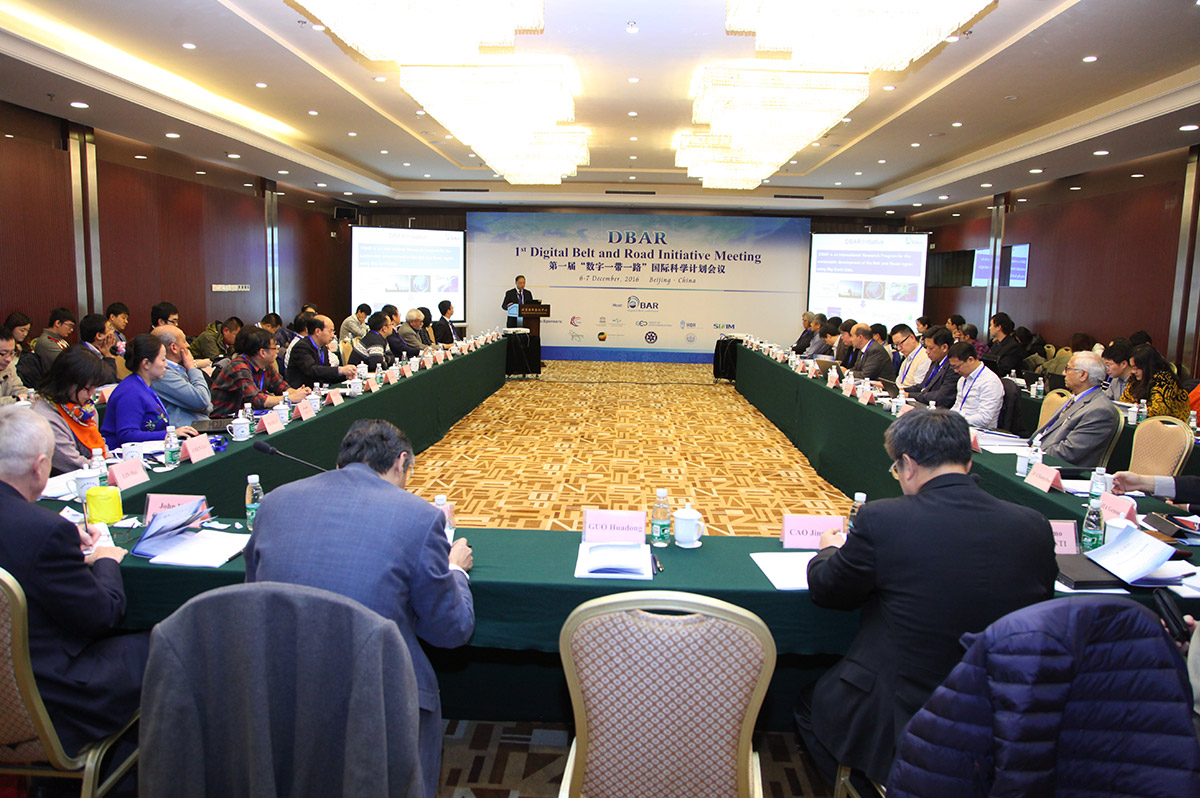
The 1st DBAR Meeting, held in Beijing.
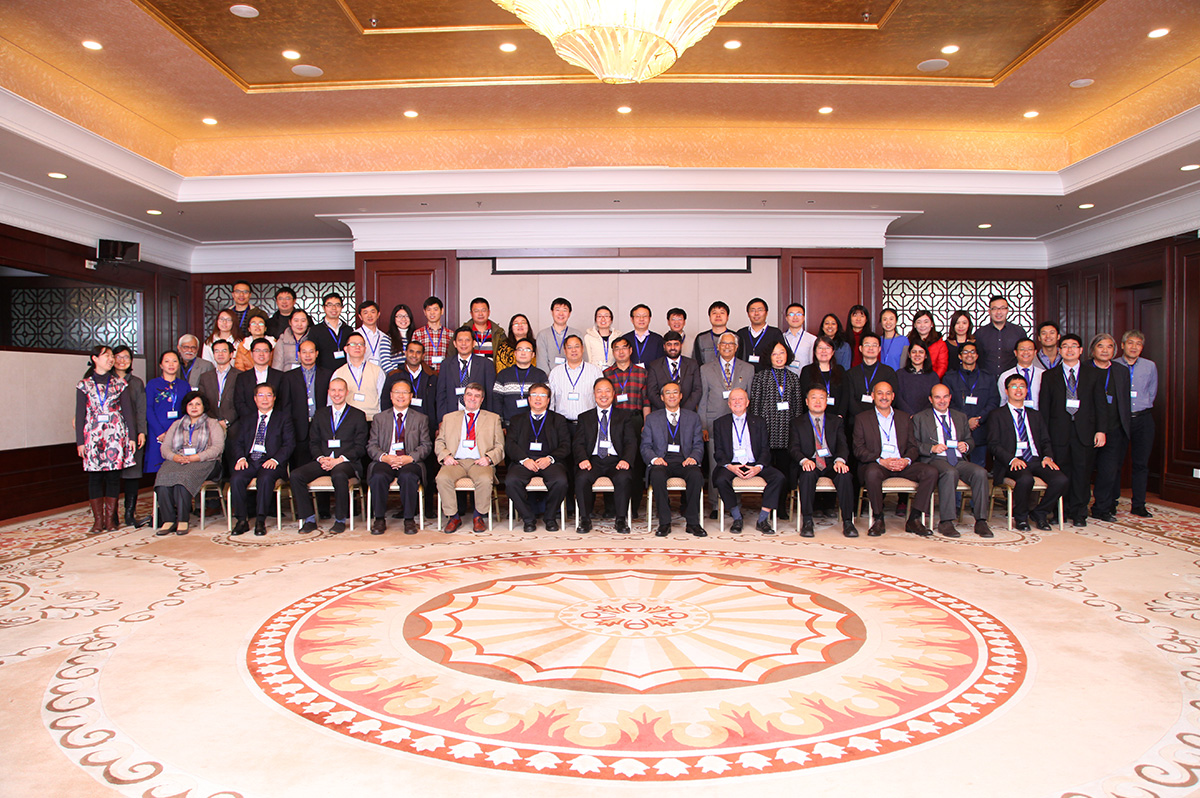
Group photo.